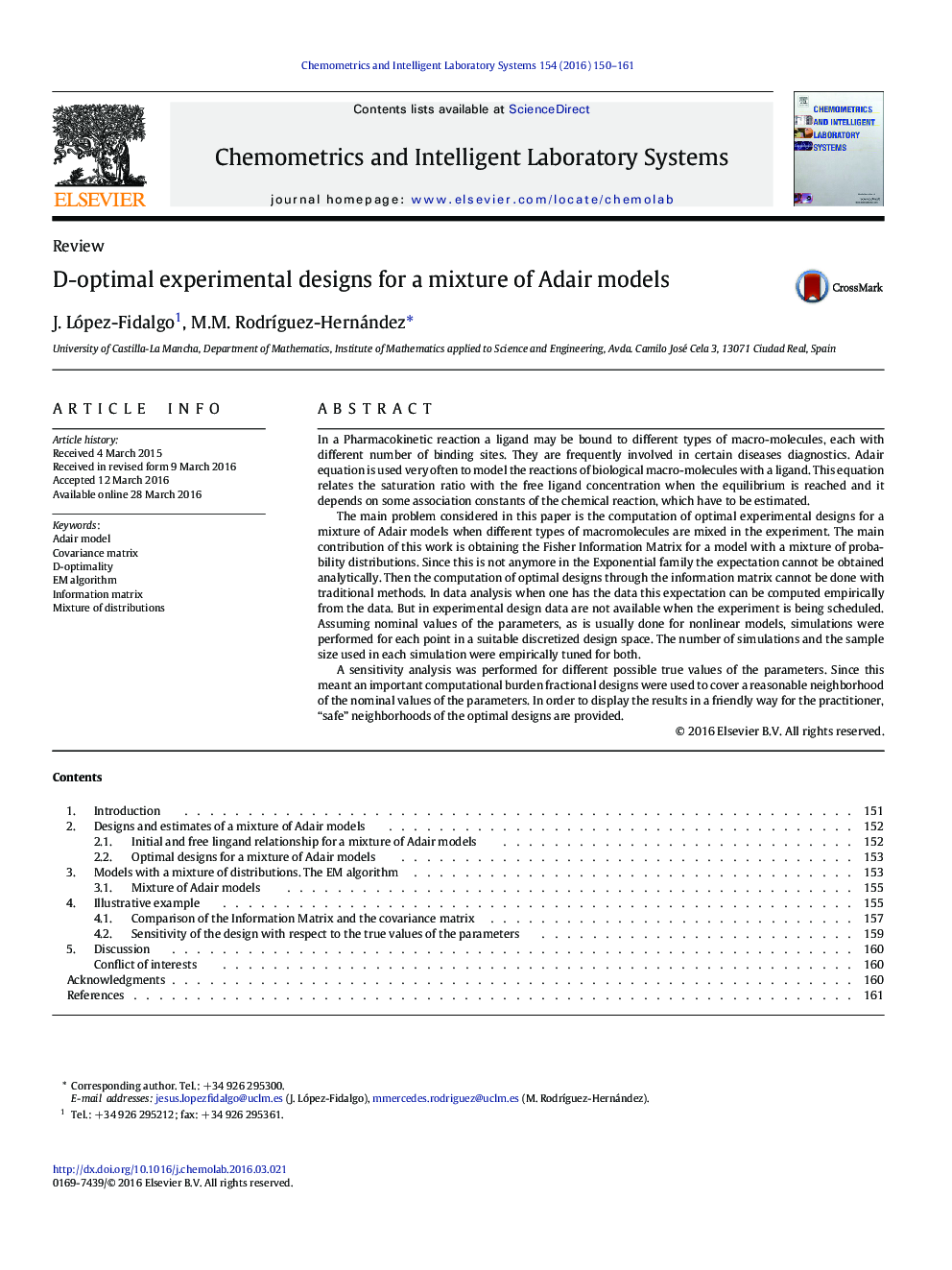| کد مقاله | کد نشریه | سال انتشار | مقاله انگلیسی | نسخه تمام متن |
|---|---|---|---|---|
| 1180320 | 1491525 | 2016 | 12 صفحه PDF | دانلود رایگان |

• Optimal designs are computed for a probability mixture of Adair models.
• An equation relating the free (random) and the initial ligand (under control) is provided.
• Expectation of Information Matrix cannot be computed analytically, simulations are used instead.
• The number of simulations and the sample size are empirically calibrated.
• A robustness analysis is performed.
In a Pharmacokinetic reaction a ligand may be bound to different types of macro-molecules, each with different number of binding sites. They are frequently involved in certain diseases diagnostics. Adair equation is used very often to model the reactions of biological macro-molecules with a ligand. This equation relates the saturation ratio with the free ligand concentration when the equilibrium is reached and it depends on some association constants of the chemical reaction, which have to be estimated.The main problem considered in this paper is the computation of optimal experimental designs for a mixture of Adair models when different types of macromolecules are mixed in the experiment. The main contribution of this work is obtaining the Fisher Information Matrix for a model with a mixture of probability distributions. Since this is not anymore in the Exponential family the expectation cannot be obtained analytically. Then the computation of optimal designs through the information matrix cannot be done with traditional methods. In data analysis when one has the data this expectation can be computed empirically from the data. But in experimental design data are not available when the experiment is being scheduled. Assuming nominal values of the parameters, as is usually done for nonlinear models, simulations were performed for each point in a suitable discretized design space. The number of simulations and the sample size used in each simulation were empirically tuned for both.A sensitivity analysis was performed for different possible true values of the parameters. Since this meant an important computational burden fractional designs were used to cover a reasonable neighborhood of the nominal values of the parameters. In order to display the results in a friendly way for the practitioner, “safe” neighborhoods of the optimal designs are provided.
Journal: Chemometrics and Intelligent Laboratory Systems - Volume 154, 15 May 2016, Pages 150–161